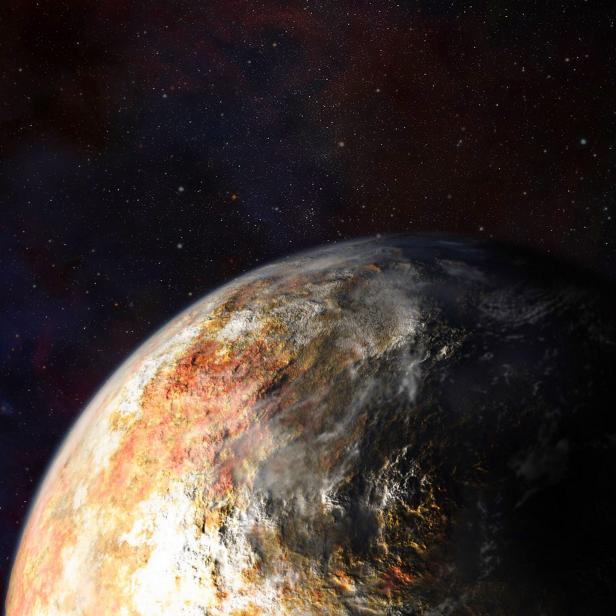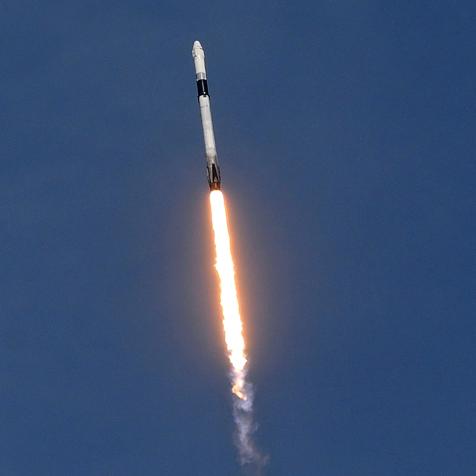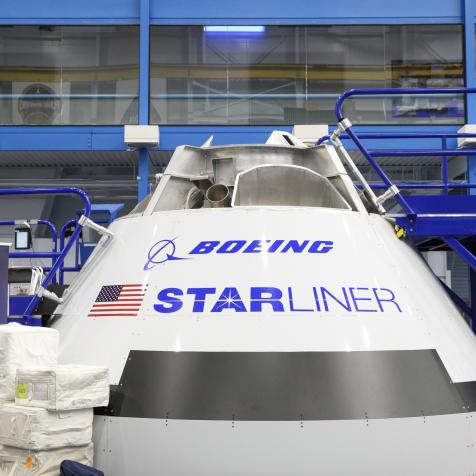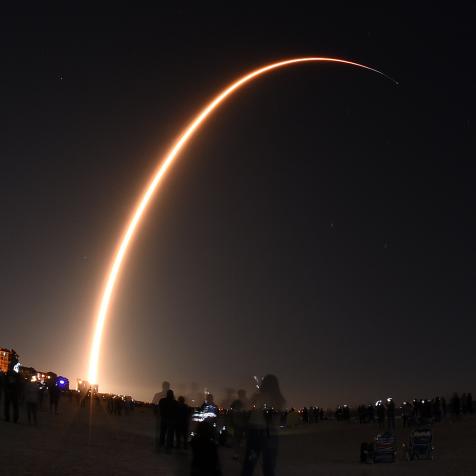
Lowell Observatory Astronomers Celebrate Hubble
Astronomers from Lowell Observatory in Flagstaff, Arizona celebrate the 30th Anniversary of the Hubble Space Telescope with personal stories from their research.
Since its launch in 1990, the Hubble Space Telescope has made more than 1.3 million observations in space! This telescope revolutionized astronomy and we have two first-hand accounts about what it was like to work with, as those in the "biz" call it, HST.

Discovering Orphan Star Clusters with Dr. Michael West (Deputy Director for Science & Astronomer)

This image shows some of the intergalactic star clusters (in green circles) that we discovered using HST. Each cluster has up to a million stars, but they’re so far away that even with Hubble’s exquisite eyesight they look like a single point of light.
SOURCE: Dr. Michael West
HST’s incredibly sharp vision has been an essential part of my research for three decades, revealing things never-before-seen. My favorite was our discovery of orphaned star clusters. Most galaxies, including our Milky Way, are surrounded by ancient star clusters that swarm around them like bees around a hive. But using Hubble, we discovered a previously unknown population of these star clusters that roam the space between galaxies. We think these cosmic wanderers were torn free from galaxies that passed too close, providing a record of past galaxy collisions and cannibalism.

A small region taken from our larger HST image of the heart of a galaxy cluster named Abell 1185.
SOURCE: Dr. Michael West
Kuiper Belt Exploration with Dr. Will Grundy (Astronomer)

Mark Garlic - SCIENCE PHOTO LIBRARY
Hubble Space Telescope and Kuiper belt exploration have been partners all the way back. Kuiper belt objects (KBOs) are so faint, small, and distant that Hubble's vantage above the Earth's atmosphere provides a tremendous advantage in their study. The sensitivity and the exquisite spatial resolution have both been important. Among the highlights from Hubble’s many KBO observations over the 3 decades are studies of the distributions of colors and sizes, especially on the faint end of the distribution, beyond the reach of even the largest ground-based telescopes. Hubble discovered that many KBOs have satellites or are binaries with near-equal companions. The satellite orbits give the masses and thus densities, enabling us to learn about their interiors. Patterns in the binary orbital characteristics as well as the densities, colors, and size frequency distributions are revealing how planetesimals, the building blocks of planets, formed in the protoplanetary nebula.

Photo 12/Universal Images Group
Hubble's contribution isn't just observations. The Hubble Postdoctoral Fellowship program, also launched in 1990, has provided tremendous support for Kuiper Belt science. Many in the field today are deeply grateful to the program for giving our scientific careers rocket boost, myself included.
Speaking of rockets, you can learn much more by sending a spacecraft to explore something up close. Although Hubble is in low Earth orbit, less than 350 miles up, it was essential in enabling NASA’s New Horizon mission, which flew more than 4 billion miles from Earth to explore Pluto and the Kuiper Belt. Hubble's maps of Pluto’s surface and its discoveries of Pluto's 4 small moons were key inputs into detailed planning for the 2015 Pluto flyby. Hubble observations were also crucial to the navigation campaign that made that encounter a success, unveiling Pluto as the first of a whole new class of small, active, icy planets beyond the giant planet zone.

Universal History Archive
A pair of small moons orbiting pluto discovered by NASA's Hubble Space Telescope: Nix and Hydra are roughly 5,000 times fainter than Pluto and are about two to three times farther from Pluto than its large moon, Charon. (Photo by: Universal History Archive/Universal Images Group via Getty Images)
Hubble played an even more essential role in Kuiper Belt exploration by discovering Arrokoth, a billion miles further beyond Pluto, and by refining Arrokoth's orbit to the precision needed for a close flyby. That was a truly amazing feat, considering that the encounter was less than 5 years after Arrokoth's discovery, a tiny fraction of its 3-century orbit around the Sun (and 27th magnitude Arrokoth was right in the thick of the Milky Way!). Searching for a post-Pluto target 8-plusyears after the launch of New Horizons was a risky gamble. But Hubble pulled it off, and Arrokoth gave humanity our first view of what a pristine planetesimal actually looks like. So happy birthday, Hubble, and thanks for the amazing 30-year swath of discovery!


















